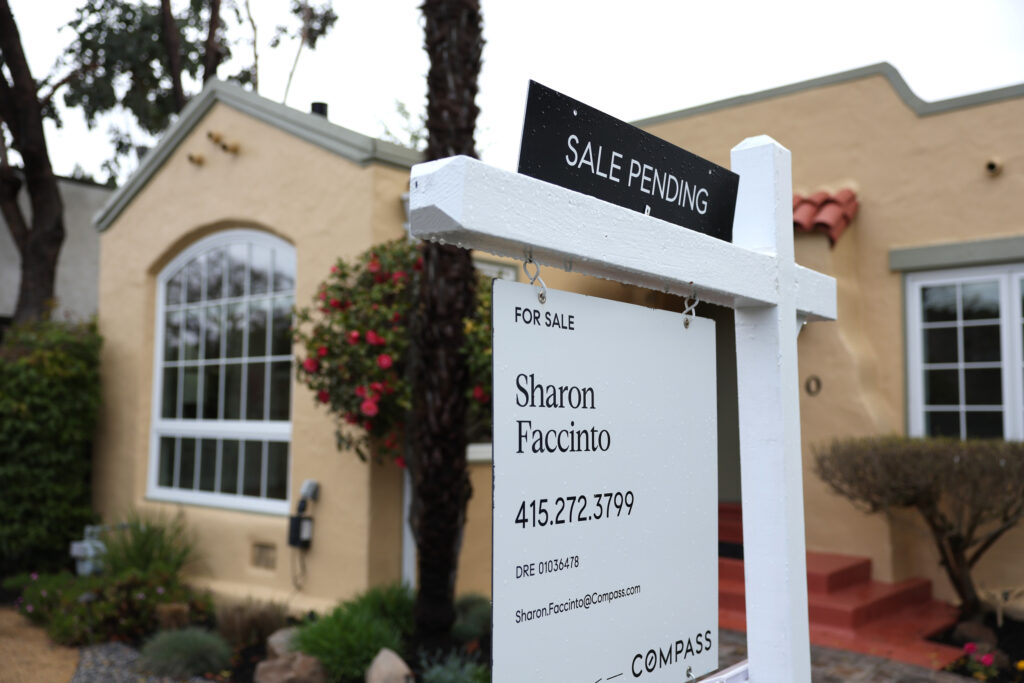While their salaries may still lag behind their male counterparts, single women are far outpacing single men when it comes to homeownership.
A new report from LendingTree found that single women were more likely than single men to own homes in every state except three: North Dakota, South Dakota and Alaska.
Why It Matters
The number of Americans planning to buy a home has hit its lowest level in 12 years, according to last year’s Conference Board Consumer Confidence Index.
Homeownership may be especially difficult for Generation Zers and millennials, many of whom have less money than their elders and are less likely to be married than previous generations.
What To Know
Women’s median weekly earnings still trail those of men, with the U.S. Bureau of Labor Statistics reporting women’s earnings are just 83.6 percent of men’s. But women are still outpacing men when it comes to homeownership.
In the U.S. overall, single women own 2.72 million more homes than single men, as they’ve purchased 11.14 million compared to 8.42 million bought by single men, according to the LendingTree report.
The homeownership gap between the two groups has seen a slight uptick since 2022, when there was only a 2.71 million difference, and the gender gap was the largest in Delaware and Connecticut, at 5.23 and 5.06 percentage points, LendingTree found.
But among the three states where single men owned more homes than single women, according to LendingTree, North Dakota saw 10.75 percent of all homes owned by single women compared to 13.52 percent by single men.
In South Dakota, the gap was similar, with 12.37 percent of the roughly 263,00 homes owned by single women and 13.10 percent owned by single men.
Alaska also had single men ahead in homeownership, with a 12.79 percent share being single men and slightly less, 12.56 percent, accounting for homes owned by single women.
The gap between single women and single men in homeownership could show a shift in salary gaps. In six metro areas, the average earnings for millennial women were higher than millennial men, according to the report.
Experts say single women may also apply an increased focus on achieving homeownership, and they’re also outpacing men in rates of higher education.
What People Are Saying
Alex Beene, financial literacy instructor for the University of Tennessee at Martin, told Newsweek: “Home ownership is now firmly outside the category of ‘impulse buy’ for the vast majority of Americans, and that is one of the reasons why housing purchases from single women are now outpacing those made by single men. As the job and earnings gap for women in many industries have decreased, their savings potential has, as well, and research has shown single women tend to be better at long-term financial planning due to future life goals like starting a family and achieving financial security.”
He added: “It’s not to say all single men flounder in the area of saving and investing, but they typically need more motivation, especially at a younger age. And outside of a few states like Alaska and the Dakotas that have industries that typically lean more male-centric, most states are seeing men who are starting major life milestones later and unfortunately not saving in anticipation of them.”
Kevin Thompson, finance expert and founder/CEO of 9i Capital Group, told Newsweek: “There has been a significant shift in education. For every 100 bachelor’s degrees awarded to women, only 74 are awarded to men… Women also earn three out of five master’s and doctoral degrees, positioning them on a higher earnings trajectory. Meanwhile, wages for men are lower today than they were in 1979. Given these trends, it’s clear why women are outperforming men, particularly in homeownership.”
Jessica Lautz, National Association of Realtors deputy chief economist and vice president of research, told Newsweek: “The rate of marriage is different in each state so that will impact this data. Where marriage rates are higher, there are likely to be fewer single-women buyers. Single women have been outpacing single men since 1981 as home buyers. This means not only the financial security of homeownership, but wealth gains through homeownership over time.”
What Happens Next
In the long run, higher female homeownership could spur a declining birth rate and fewer marriages, Thompson said.
“The conventional model—where men work and women stay home to raise children—has already been disrupted,” Thompson said. “As inflation and the cost of living continue to rise, it’s becoming increasingly clear that dual-income households may be the norm moving forward.”
Read the full article here
















